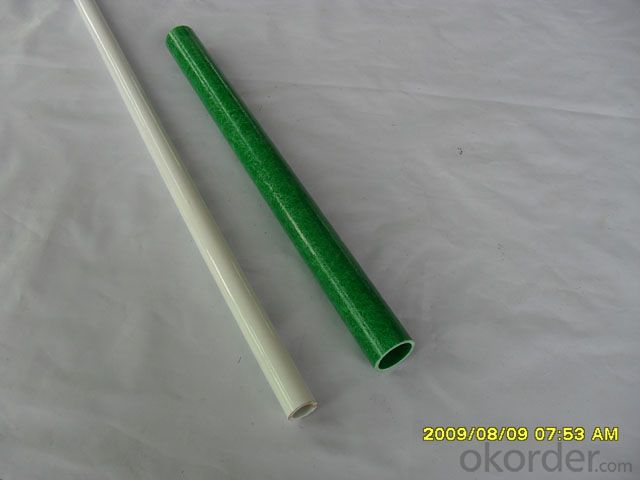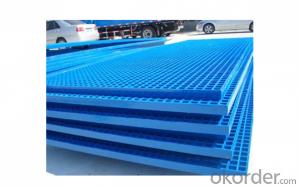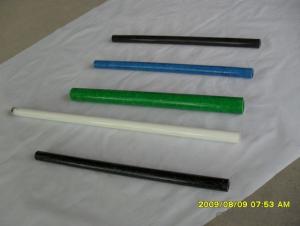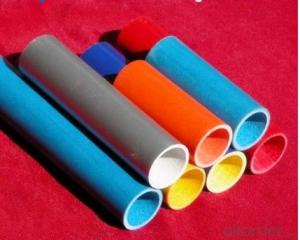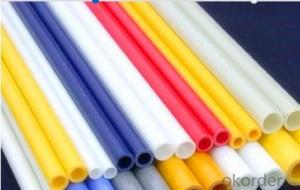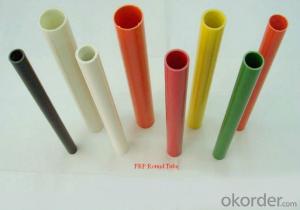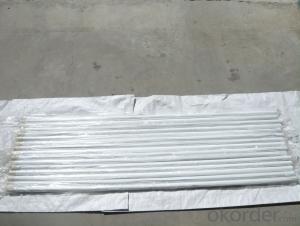FRP Pultrusion Profiles Durable Fiberglass Tool Handle
- Loading Port:
- China Main Port
- Payment Terms:
- TT OR LC
- Min Order Qty:
- -
- Supply Capability:
- -
OKorder Service Pledge
OKorder Financial Service
You Might Also Like
Specifications of Pultruded Durable Fiberglass Tool Handle:
1) Pass ISO9001
2) 25mm 28mm 32mm 35mm 38mm
3) 1'' 1.108'' 1.25'' 1.38'' 1.50''
4) UV protection
5) Competitive price
Features of Pultruded Durable Fiberglass Tool Handle:
1) Fiberglass tool handles are designed for a variety of implements including shovels, rakes, hoes, pruners and post hole diggers.
2) Diameter: 25mm 28mm 32mm 35mm 38mm 1'' 1.108'' 1.25'' 1.38'' 1.50''
3) Color: red, black, white, yellow, blue, green, gray
4) Fiberglass tool handles may be produced cut-to-length or in stock-length quantities determined by the customer
5)Lightweight, High Impact Resistant, Low Conductivity, Corrosion Resistant, Durable/Weather Resistant Surface, Aesthetic Appeal
6)The fiberglass tool handles will not splinter or break under normal conditions and are extremely strong and long-lasting. Strongwell tubes are manufactured with surfacing veils unless otherwise specified.
- Q: Can FRP pultrusion profiles be used in the construction of outdoor signage?
- Yes, FRP (Fiber Reinforced Polymer) pultrusion profiles can be used in the construction of outdoor signage. FRP pultrusion profiles are known for their durability, strength, and resistance to various environmental conditions, making them suitable for outdoor applications. These profiles are typically made of a combination of fiberglass reinforcement and resin matrix, resulting in a lightweight yet strong material. Outdoor signage often needs to withstand harsh weather conditions, such as rain, sun exposure, and temperature fluctuations. FRP pultrusion profiles have excellent resistance to corrosion, UV rays, and moisture, ensuring that the signage can maintain its structural integrity and visual appeal over time. Furthermore, FRP pultrusion profiles can be customized to meet specific design requirements, allowing for flexibility in creating unique and eye-catching outdoor signage. These profiles can be easily shaped, cut, and assembled, making them a versatile choice for signage applications. In summary, FRP pultrusion profiles can indeed be used in the construction of outdoor signage due to their durability, resistance to environmental conditions, and flexibility in design.
- Q: Can FRP pultrusion profiles be used in the construction of water treatment plants?
- Yes, FRP (Fiber Reinforced Polymer) pultrusion profiles can be used in the construction of water treatment plants. FRP pultrusion profiles offer several advantages such as high strength-to-weight ratio, corrosion resistance, and durability, making them well-suited for water treatment plant applications. These profiles can be used in various structural components like beams, columns, grating, and handrails, providing a cost-effective and long-lasting solution for the construction of water treatment plants.
- Q: Can FRP pultrusion profiles be used in the construction of agricultural structures?
- Yes, FRP (Fiber Reinforced Polymer) pultrusion profiles can be used in the construction of agricultural structures. FRP pultrusion profiles offer several advantages that make them suitable for agricultural applications. Firstly, FRP pultrusion profiles are lightweight yet strong, making them ideal for constructing agricultural structures such as greenhouses, barns, and storage facilities. Their high strength-to-weight ratio allows for easy installation and reduces the overall weight of the structure, thereby minimizing the need for heavy machinery during construction. Secondly, FRP pultrusion profiles are corrosion-resistant, which is a crucial characteristic for agricultural structures that are exposed to various environmental elements such as moisture, chemicals, and fertilizers. Unlike traditional materials like wood or steel, FRP does not rot, rust, or corrode, ensuring the longevity and durability of the agricultural structure. Additionally, FRP pultrusion profiles offer excellent electrical insulation properties. This is particularly beneficial in agricultural applications where electrical equipment, such as lighting systems or ventilation controls, are commonly used. The non-conductive nature of FRP prevents the risk of electrical shocks or short circuits. Moreover, FRP pultrusion profiles are highly customizable and can be designed to meet specific requirements. This flexibility allows for the creation of structures that are tailored to the unique needs of agricultural operations, such as load-bearing capacity, dimensional accuracy, and thermal insulation. Furthermore, FRP pultrusion profiles are non-magnetic, making them suitable for use in agricultural structures where magnetic interference can disrupt sensitive equipment or affect the growth of crops. Overall, the use of FRP pultrusion profiles in the construction of agricultural structures offers numerous benefits, including lightweight construction, corrosion resistance, electrical insulation, customization options, and non-magnetic properties. These advantages make FRP pultrusion profiles a viable and practical choice for agricultural applications.
- Q: Can FRP pultrusion profiles be used in the construction of pedestrian tunnels?
- Pedestrian tunnels can utilize FRP (Fiber Reinforced Polymer) pultrusion profiles. FRP is a lightweight and high-strength material that presents several advantages over traditional construction materials like steel or concrete. Corrosion resistance is a significant benefit of FRP pultrusion profiles in pedestrian tunnel construction. Unlike steel, FRP does not corrode when exposed to moisture or harsh environmental conditions. This is particularly valuable for underground structures like pedestrian tunnels, where water seepage or high humidity may pose concerns. Moreover, FRP pultrusion profiles possess exceptional mechanical properties, including high tensile strength and stiffness. Consequently, they can endure heavy loads and provide structural integrity to the tunnel. FRP's lightweight characteristic also simplifies handling and installation, ultimately reducing construction time and costs. Additionally, FRP profiles can be easily molded into various shapes and sizes, making them highly versatile for designing pedestrian tunnels. They can be tailored to meet specific project requirements, such as tunnel curvature or dimensions. This design flexibility enables innovative and efficient solutions in tunnel construction. Regarding safety, FRP pultrusion profiles exhibit high fire resistance and are non-conductive, crucial for ensuring pedestrian safety in tunnels. They also possess low thermal conductivity, providing insulation properties that help maintain a comfortable environment inside the tunnel. Overall, the utilization of FRP pultrusion profiles in pedestrian tunnel construction offers numerous benefits, including corrosion resistance, high strength, design versatility, and enhanced safety. These advantages establish FRP as an excellent choice for constructing durable and efficient pedestrian tunnels.
- Q: Are FRP pultrusion profiles resistant to termites or other pests?
- FRP pultrusion profiles possess inherent resistance against termites and other pests. Unlike traditional wood or metal materials, FRP profiles fail to serve as a food source for termites or any other pests. FRP comprises reinforced fibers and a polymer matrix, typically constructed from fiberglass and resin. These constituents lack appeal to pests and do not provide any nutritional value, thus rendering FRP profiles highly resistant to termite damage or infestation. The capability of withstanding pests is among the numerous benefits of employing FRP pultrusion profiles across diverse applications, particularly in outdoor or humid settings, where termites frequently thrive.
- Q: Can FRP pultrusion profiles be used in infrastructure projects?
- Yes, FRP pultrusion profiles can be used in infrastructure projects. These profiles are lightweight, durable, and corrosion-resistant, making them ideal for applications in bridges, walkways, railings, and other structural components. They offer high strength-to-weight ratios and can be customized to meet specific project requirements. Additionally, FRP pultrusion profiles are non-conductive, making them suitable for electrical infrastructure projects.
- Q: Can FRP pultrusion profiles be used in protective barriers?
- Yes, FRP (Fiber Reinforced Polymer) pultrusion profiles can be used in protective barriers. FRP pultrusion profiles are known for their high strength-to-weight ratio, corrosion resistance, and durability, making them suitable for various applications, including protective barriers. These profiles can be designed and manufactured to meet specific requirements, such as impact resistance, load-bearing capacity, and fire resistance. Additionally, FRP pultrusion profiles can be easily molded into different shapes and sizes, allowing for flexibility in barrier design. Whether it is for noise barriers, security fences, or safety barriers, FRP pultrusion profiles offer a reliable and cost-effective solution for protective barriers in numerous industries.
- Q: Are FRP pultrusion profiles resistant to jet fuel?
- Yes, FRP pultrusion profiles are generally resistant to jet fuel.
- Q: Can FRP pultrusion profiles be used in cooling towers?
- Cooling towers can indeed utilize FRP (Fiber Reinforced Polymer) pultrusion profiles. These profiles possess several advantages that make them suitable for such applications. To begin with, the corrosion resistance of FRP pultrusion profiles is exceptional, a crucial attribute in a cooling tower setting where exposure to water and chemicals is commonplace. Unlike conventional materials like steel, FRP pultrusion profiles do not rust or corrode, ensuring a longer service life and reduced maintenance expenses. Secondly, FRP pultrusion profiles exhibit a high strength-to-weight ratio, rendering them lightweight yet sufficiently robust to meet the structural demands of cooling towers. This facilitates easier installation and transportation, ultimately reducing the overall project costs. Thirdly, FRP pultrusion profiles boast excellent thermal insulation properties. As cooling towers involve the transfer of heat from water to the surrounding air, the thermal insulation provided by these profiles enhances the efficiency of the cooling process. Lastly, FRP pultrusion profiles are highly customizable and can be tailored to meet the specific requirements of cooling tower applications. They can be engineered to possess various shapes, sizes, and dimensions, ensuring a precise fit for the cooling tower design. Overall, FRP pultrusion profiles represent a dependable and cost-effective choice for cooling tower applications. Their corrosion resistance, high strength-to-weight ratio, thermal insulation capabilities, and customization options make them an excellent option.
- Q: Can FRP pultrusion profiles be used in the construction of pedestrian tunnels?
- Yes, FRP (Fiber Reinforced Polymer) pultrusion profiles can be used in the construction of pedestrian tunnels. FRP is a lightweight and high-strength material that offers numerous advantages over traditional construction materials like steel or concrete. One of the main advantages of using FRP pultrusion profiles in the construction of pedestrian tunnels is their corrosion resistance. Unlike steel, FRP does not corrode when exposed to moisture or harsh environmental conditions. This makes FRP profiles ideal for underground structures such as pedestrian tunnels where water seepage or high humidity can be a concern. Additionally, FRP pultrusion profiles have excellent mechanical properties, including high tensile strength and stiffness. This allows them to withstand heavy loads and provide structural integrity to the tunnel. The lightweight nature of FRP also makes it easier to handle and install, reducing the construction time and costs. Furthermore, FRP profiles can be easily molded into various shapes and sizes, making them highly versatile for designing pedestrian tunnels. They can be customized to meet specific project requirements, such as the curvature or dimensions of the tunnel. This flexibility in design allows for creative and efficient solutions in tunnel construction. In terms of safety, FRP pultrusion profiles have a high fire resistance and are non-conductive, which is crucial in ensuring the safety of pedestrians in tunnels. They also have a low thermal conductivity, providing insulation properties that can help maintain a comfortable environment inside the tunnel. Overall, the use of FRP pultrusion profiles in the construction of pedestrian tunnels offers numerous benefits, including corrosion resistance, high strength, versatility in design, and improved safety. These advantages make FRP an excellent choice for constructing durable and efficient pedestrian tunnels.
Send your message to us
FRP Pultrusion Profiles Durable Fiberglass Tool Handle
- Loading Port:
- China Main Port
- Payment Terms:
- TT OR LC
- Min Order Qty:
- -
- Supply Capability:
- -
OKorder Service Pledge
OKorder Financial Service
Similar products
Hot products
Hot Searches
Related keywords



